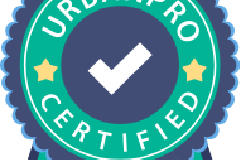This course covers the entite syllabus of grade 9 and Grade 10 portion. After the completion of syllabus through board paper discussion is done and startegies are discussed to do well in Exam.
SYLLABUS-
THEORY – 100 Marks
1. Revision of Class IX Syllabus
(i) Introduction to Object Oriented Programming concepts, (ii) Elementary Concept of Objects and Classes, (iii) Values and Data types, (iv) Operators in Java, (v) Input in Java, (vi) Mathematical Library Methods, (vii) Conditional constructs in Java, (viii) Iterative constructs in Java, (ix) Nested for loops.
2. Class as the Basis of all Computation
Objects and Classes
Objects encapsulate state and behaviour – numerous examples; member variables; attributes or features. Variables define state; member methods; Operations/methods/messages/ methods define behaviour.
Classes as abstractions for sets of objects; class as an object factory; primitive data types, composite data types. Variable declarations for both types; difference between the two types. Objects as instances of a class.
Consider real life examples for explaining the concept of class and object.
3. User - defined Methods
Need of methods, syntax of methods, forms of methods, method definition, method calling, method overloading, declaration of methods,
Ways to define a method, ways to invoke the methods – call by value [with programs] and call by reference [only definition with an example], Object creation - invoking the methods with respect to use of multiple methods with different names to implement modular programming, using data members and member methods, Actual parameters and formal parameters, Declaration of methods - static and non-static, method prototype / signature, - Pure and impure methods, - pass by value [with programs] and pass by reference [only definition with an example], Returning values from the methods , use of multiple methods and more than one method with the same name (polymorphism - method overloading).
4. Constructors
Definition of Constructor, characteristics, types of constructors, use of constructors, constructor overloading.
Default constructor, parameterized constructor, constructor overloading., Difference between constructor and method.
5. Library classes
Introduction to wrapper classes, methods of wrapper class and their usage with respect to numeric and character data types. Autoboxing and Unboxing in wrapper classes.
Class as a composite type, distinction between primitive data type and composite data type or class types. Class may be considered as a new data type created by the user, that has its own functionality. The distinction between primitive and composite types should be discussed through examples. Show how classes allow user defined types in programs. All primitive types have corresponding class wrappers. Introduce Autoboxing and Unboxing with their definition and simple examples.
The following methods are to be covered:
int parseInt(String s),
long parseLong(String s),
float parseFloat(String s),
double parseDouble(String s),
boolean isDigit(char ch),
boolean isLetter(char ch),
boolean isLetterOrDigit(char ch),
boolean isLowerCase(char ch),
boolean isUpperCase(char ch),
boolean isWhitespace(char ch),
(c) Programs involving data members, member methods invoking the methods with respect to the object created.
(ii) Constructors
(a) Programs based on different types of constructors mentioned in the scope of the syllabus.
(b) Programs / outputs based on constructor overloading
(iii) Library classes
(a) Outputs based on all the methods mentioned in the scope of the syllabus.
(b) Programs to check whether a given character is an uppercase/ lowercase / digit etc.
(iv) Encapsulation
Questions based on identifying the different variables like local, instance, arguments, private, public, class variable etc.
(v) Arrays
(a) Programs based on accessing the elements of an array.
(b) Programs based on sort techniques mentioned in the scope of the syllabus.
(c) Programs based on search techniques mentioned in the scope of the syllabus.
(vi) String handling
(a) Outputs based on all the string methods mentioned in the scope of the syllabus.
(b) Programs based on extracting the characters from a given string and manipulating the same.
(c) Palindrome string, pig Latin, alphabetical order of characters, etc.






